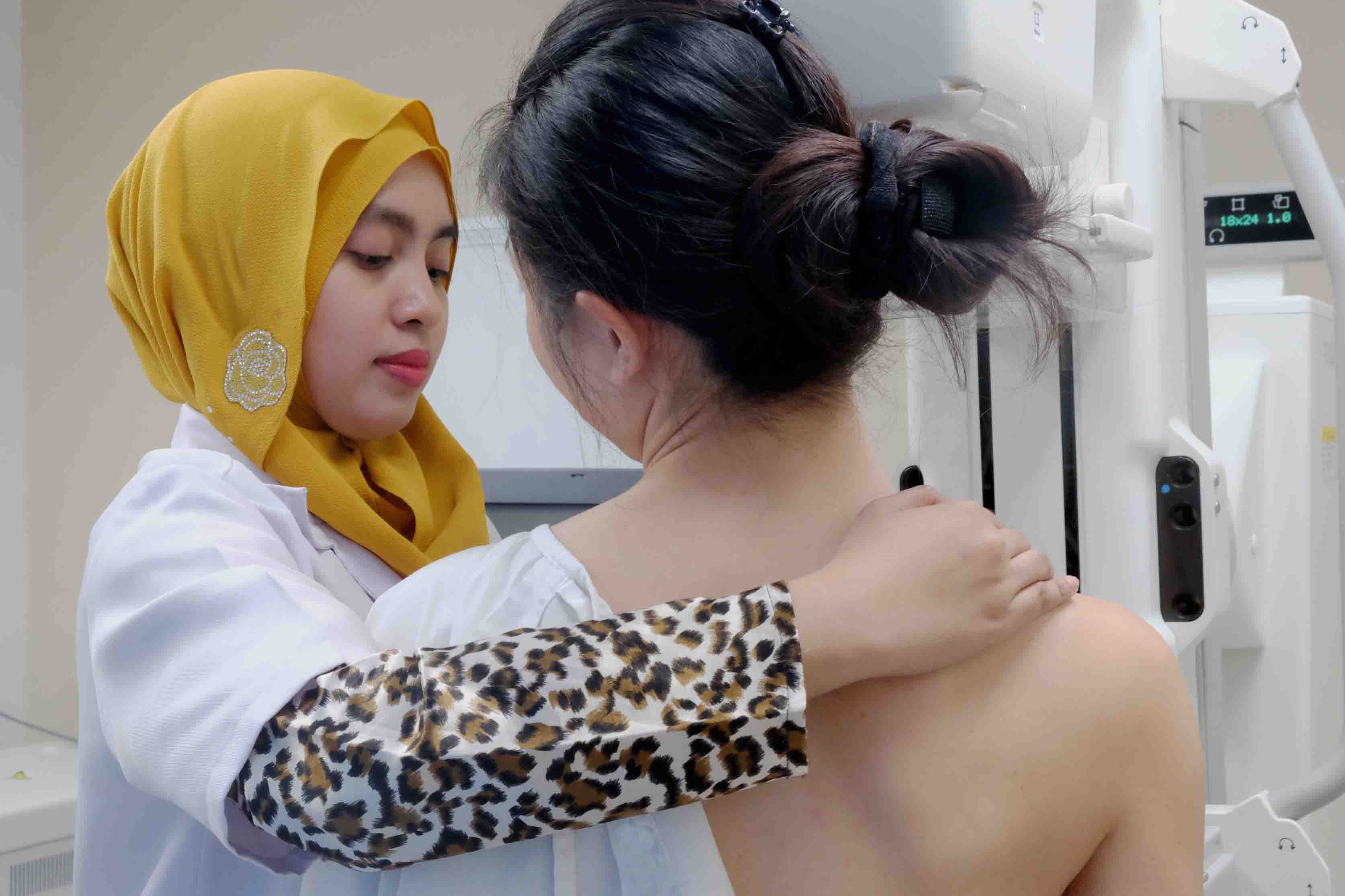What is a Mammogram?
A mammogram is an x-ray of the breast that looks for changes that may be signs of breast cancer
Mammograms can be used to check for breast cancer in women who have no signs or symptoms of the disease. This type of mammogram is called a Screening Mammogram. Screening mammograms usually involve two or more x-ray pictures, or images, of each breast. The x-ray images often make it possible to detect tumors that cannot be felt. Screening mammograms can also find microcalcifications (tiny deposits of calcium) that sometimes indicate the presence of breast cancer.
Mammograms can also be used to check for breast cancer after a lump or other sign or symptom of the disease has been found. This type of mammogram is called a Diagnostic Mammogram. Besides a lump, signs of breast cancer can include breast pain, thickening of the skin of the breast, nipple discharge, or a change in breast size or shape; however, these signs may also be signs of benign conditions. All women should be familiar with how their breasts normally look and feel and report any changes to a health care provider right away.
Regular mammograms can detect breast cancer at an early stage, when success rate of being treated is highest. A mammogram can help to detect abnormalities in breasts that could be indicative of cancer, years before physical symptoms develop. Results from many decades of research clearly show that women who have regular mammograms are more likely to have breast cancer detected at the early stages; are less likely to need aggressive treatment like surgery to remove the breast (mastectomy) and chemotherapy. Hence, survival rates are much higher.

What to expect for Mammogram?
You will first be requested to undress above the waist. A female Radiographer will then help position the breast for the mammogram. A normal screening mammogram involves taking two views of each breast, and the whole procedure lasts about 20 minutes. The process involves the brief, a few seconds long, compression of the breasts. This is done to obtain the best possible image of all breast tissue. The compression may be uncomfortable, but if there is pain the Radiographer should be notified. To lessen discomfort and pain, it is suggested that patients avoid scheduling mammograms for the week before or during menstruation when breasts may be more sensitive. Also, it is suggested not to wear deodorant, powder, or cream under the arms so as not to interfere with the quality of the mammogram.
Important things to know about mammograms
Early screening saves life
- They can save your life. Finding breast cancer early reduces your risk of dying from the disease by 25-30% or more. Women should begin having mammograms yearly at age 40, or earlier if they’re at high risk.
- Don’t be afraid. Mammography is a fast procedure, and discomfort is minimal for most women. The procedure is safe: there’s only a very tiny amount of radiation exposure from a mammogram.
- Screening Mammogram & Breast Ultrasound. Screening Mammograms are recommended for women above 40 years old with average risk of breast cancer while younger women who have no signs and symptoms of breast cancer are encouraged to do an ultrasound for better accuracy.


